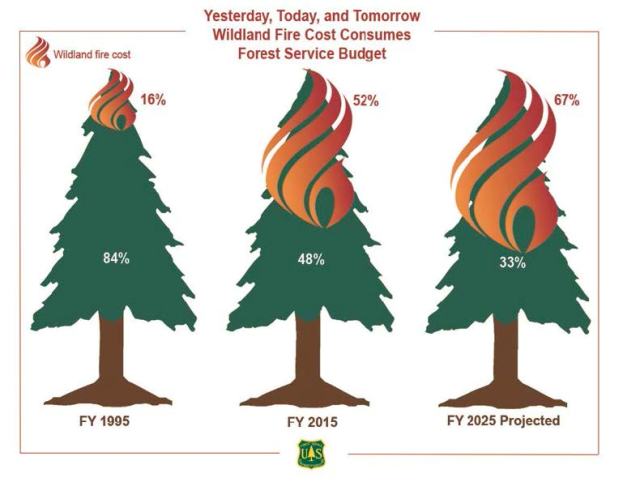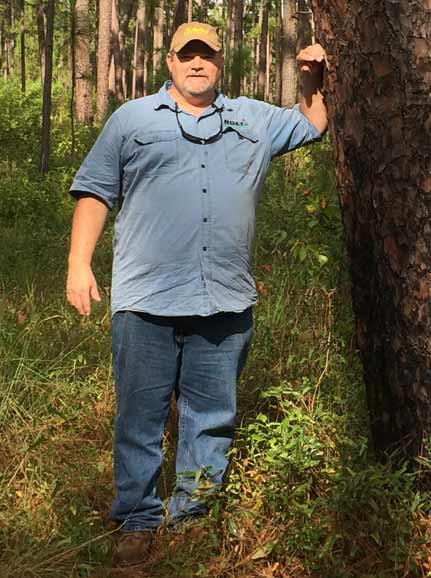 If you’ve been paying attention to the news you have likely seen information on the many wildfires currently burning across the southeastern United States as well as those that occurred this summer in the western part of the country. In the Southeast, we’re having unprecedented wildfire activity for this time of the year. Over the past few years these wildfires are tending to occur more often, burn at higher intensities and burn more acres. Fire has been a part of the natural process throughout time and if used properly can have a positive effect on the environment. Prescribed Fires can be defined as a safe way to apply a natural process, ensure ecosystem health and reduce wildfire risk. Wildfire is one of the most destructive forces known to man and can be defined as any unwanted or unplanned fire burning in shrub, forest, or grassland.
If you’ve been paying attention to the news you have likely seen information on the many wildfires currently burning across the southeastern United States as well as those that occurred this summer in the western part of the country. In the Southeast, we’re having unprecedented wildfire activity for this time of the year. Over the past few years these wildfires are tending to occur more often, burn at higher intensities and burn more acres. Fire has been a part of the natural process throughout time and if used properly can have a positive effect on the environment. Prescribed Fires can be defined as a safe way to apply a natural process, ensure ecosystem health and reduce wildfire risk. Wildfire is one of the most destructive forces known to man and can be defined as any unwanted or unplanned fire burning in shrub, forest, or grassland.
Many of these wildfires occur within the Wildland-Urban Interface (WUI), therefore making them very expensive to fight. The WUI can be defined as areas where homes are built near or among lands prone to wildland fire. Depending on the area of the country, fire departments might refer to wildland fires as brush fires, forest fires, rangeland fires, or something else; however, they are all part of the WUI and all pose the same threat to local assets. The increase in the WUI threat has been steep because of continued development and exposure.
Last August, the United States Forest Service published a report titled The Rising Cost of Fire Operations; Effects on the Forest Service’s Non-Fire Work. In this report the Forest Service projects that by the year 2025, 67 per cent of its budget will be used for fighting wildfires. The cost of fighting wildfires in 2015 was 52 per cent of the Forest Service budget compared to only 16 percent in 1995. This means that over the years less money is available to both the National Forest System and the states to conduct needed management of the natural resources on the ground.
According to the same report, six of the largest wildfires since 1960 occurred after the year 2000. There are many reasons for the increase in wildfire activity — climatic change, more homes being built in the Wildland-Urban Interface, the Forest Service’s inability to manage the national forests due to litigation and frequent protests about timber management, just to name a few.
With these increasingly large wildfire seasons the Forest Service has no option but to take money from other important programs, sometimes called “fire borrowing,” to help pay for the fighting of these wildfires. This means that other program priorities such as vegetation and watershed management, capital improvements and maintenance, recreation, wilderness, private lands management, wildlife and fisheries habitat management, land planning and inventory, prescribed burning and monitoring all suffer at the expense of fighting wildland fires.
The USFS budget for wildland firefighting is based on a 10-year rolling average, which means the budget is based on the last 10 years firefighting cost. Once stable, the costs of fighting a growing number of larger fires is making it more expensive and unpredictable to estimate what the future cost will be.
The NBCI is currently working with the Southern Region office and other region offices in an attempt to promote better habitat for northern bobwhites and other species that require early successional savanna grassland habitat in our national forests. It requires funding from the Forest Service, state partners, non-governmental organizations and other groups to get habitat management accomplished, such as with frequent low-intensity prescribed fires that reduce the risk of damaging wildfires. Funding that is budgeted for bobwhite habitat work on national forests is being re-routed during the middle of the year to fight wildfires at the expense of habitat management. Re-routing these funds also impacts funding for forest health, stewardship, forest inventory analysis and other programs that state forestry agencies manage. Therefore, the ability to manage natural resources on national forests and provide technical assistance to private landowners is hindered. Due to this lack of management, insect and disease infestations are on the increase, species of animals and plants that need early successional forests are being lost, every year wildfires are increasing in size and in landscapes where there are dead and dying trees, therefore making them more difficult to control.
There is no quick fix to solving this problem, but it is time for action to insure that the nation’s forests are protected from wildfire and the federal land management agencies are able to properly manage the areas that have been entrusted to them by the American citizens.
Over the past couple of years several bills have been introduced in Congress which would help alleviate but would not fix the problem. Washington needs to fix the way wildfire suppression funding is budgeted and to look at alternate ways to fund wildfire disasters when the cost of fighting them exceeds the budget. Forest Service funding for doing necessary on-the-ground management should be maintained for that purpose instead of so frequently being ”borrowed” for emergency wildfire response.







